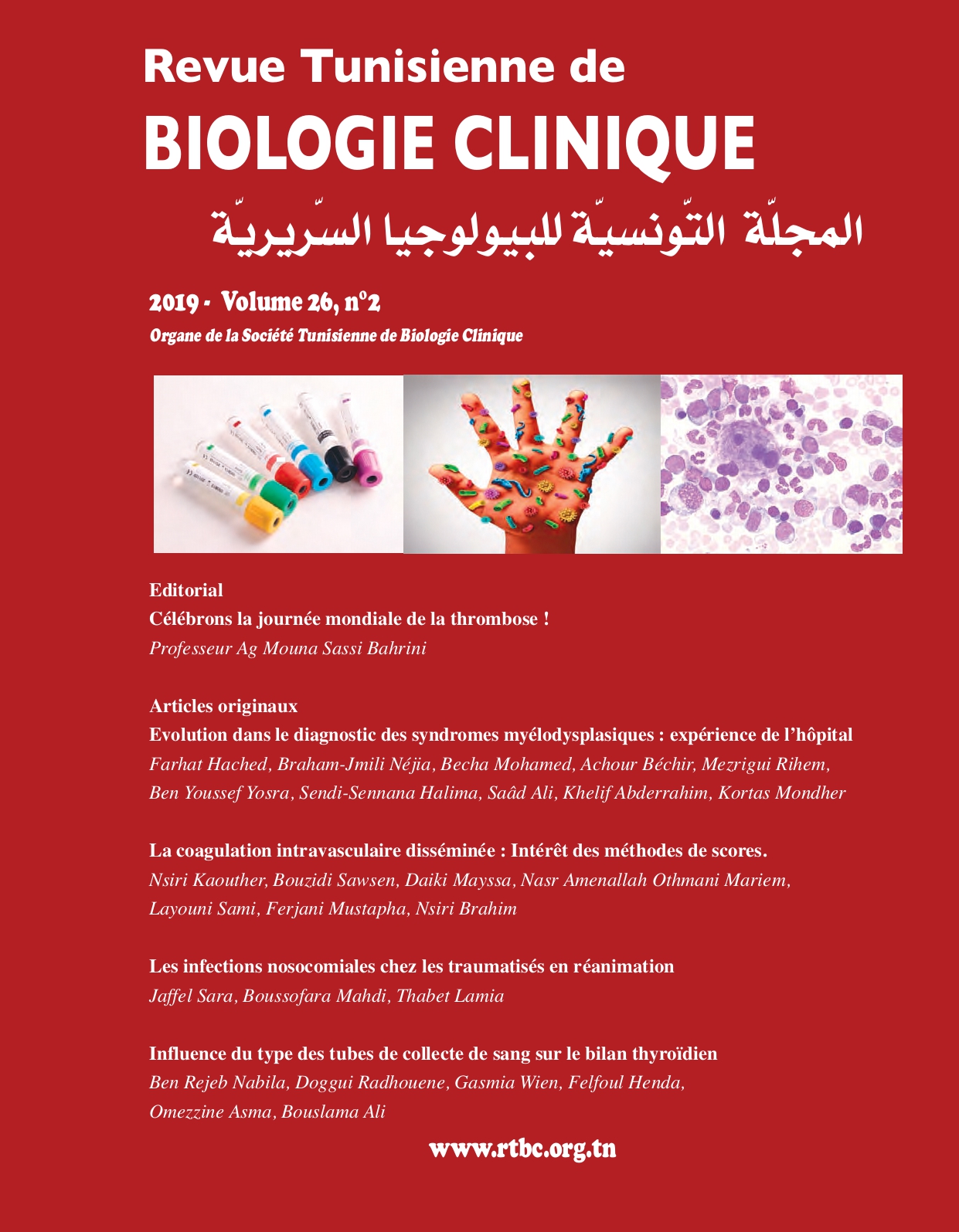Abstract
Background : Nosocomial infections are a major complication among trauma patients in intensive care unit. The aim of this study was to determine the frequency and epidemiological profile of nosocomial infections in trauma patients over a period of 3 years. Methods : All trauma patients admitted to the unit whose length of stay was 48 hours or more were included in this study. Results : During the study period, 96 patients developed a nosocomial infection, the prevalence of NI was 37.9%. Pneumonia was the most common infect ion(47.9%) followed by bacteremia (30.3%). The average time to onset of the first infectious episode was eight days. The infection was documented in 80% of cases. Kebsiella pneumoniae comes in the lead (26.8%). Effective probabilistic antibiotic therapy (49% of cases) significantly decreased mortality (p = 0.018). Nosocomial pneumopathies were significantly associated with intubation (p = 0.001). The length of stay of patients with NI was significantly higher. (r = 0.687 and p ≤10-4). In contrast, nosocomial infection was not associated with higher mortality (p = 0.681). Conclusion : The prevalence of NI in trauma patients remains high: 37.9%. Effective probabilistic antibiotic therapy significantly decreased mortality.

This work is licensed under a Creative Commons Attribution 4.0 International License.
Copyright (c) 2019 Revue Tunisienne de BIOLOGIE CLINIQUE

